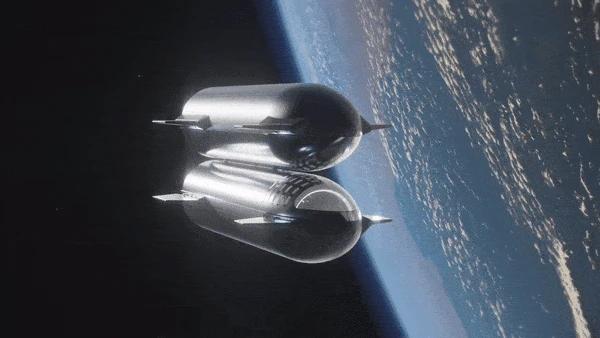In a significant leap towards deep space exploration, SpaceX is preparing to test in-orbit refueling between two of its Starship vehicles in March 2025.
This bold initiative is a vital element for future space missions to both the Moon and Mars, potentially enhancing mission ranges and payload capacities.
In-orbit refueling, a complex process involving the transfer of propellant in the vacuum of space, is seen as a game-changer for extending spacecraft operations beyond Earth’s orbit.

According to Kent Chojnacki, Deputy Manager of NASA’s Human Landing System (HLS) program, this ambitious test aims to demonstrate Starship’s capability for long-duration space missions.
However, SpaceX has yet to release an official statement about the test.
The forthcoming demonstration involves launching two Starship vehicles into low Earth orbit.
Once there, the spacecraft are expected to engage in a propellant transfer, a crucial process for the Human Landing System’s missions to the Moon.
This maneuver will involve complex docking operations and controlled transfer of propellants, challenging engineers with issues like managing fuel slosh in microgravity and maintaining pressure balance.
SpaceX’s role in NASA’s Artemis program further underscores the importance of this test.
Under a $4.05 billion contract from NASA, SpaceX is developing two human-rated Starship vehicles aimed at landing astronauts on the Moon.
Notably, the anticipated crewed lunar landing in 2026 will mark the first return of humans to the Moon since the Apollo 17 mission in 1972.
It will also historically involve landing the first woman and the first person of color on the lunar surface.
The two Starships in the upcoming test are designed to launch weeks apart, dock in orbit, and undergo propellant transfer.
Following a successful operation, these spacecraft will undock and return to Earth, paving the way for utilizing these technologies in future lunar missions.
Amit Kshatriya from NASA highlighted that SpaceX has already cleared a flight system review for this demonstration, reflecting its readiness to overcome the technical rigors of space refueling.
Elon Musk, SpaceX’s CEO, humorously acknowledged the thematic appearance of the operation, but the engineering hurdles are no jest.
The process requires precise control over cryogenic propellant transfer and many more intricate engineering feats.
Building on a successful history of engineering achievements, such as the controlled splashdown of a Starship vehicle and the gentle catch of its Super Heavy booster, SpaceX is refining these processes to support the Artemis missions.
These tasks require the HLS Starship to perform precise soft landings on the Moon’s challenging surface.
The test is a continuation of SpaceX’s relentless push towards interplanetary travel, an endeavor that promises transformative changes in space exploration.
With advances like these, SpaceX is closer to realizing the vision of making humans a multi-planetary species, advancing toward a future where humanity extends its reach to the cosmos.
